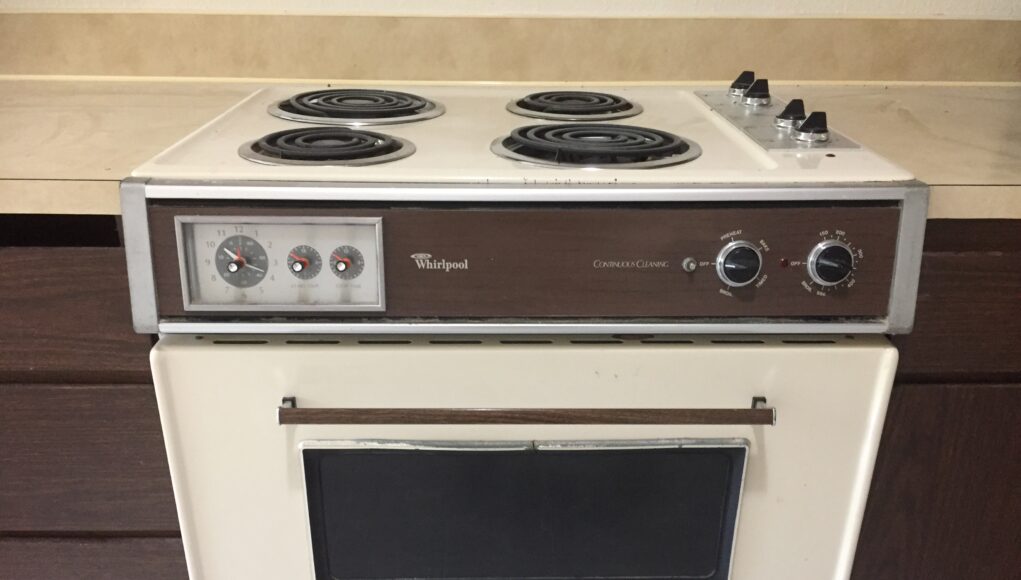If your oven has coils underneath the top burners instead of electronic ignition systems (with power cords) like at home, one must ensure that the knobs are turned off. Then, one should wait for a time until it reaches the desired temperature before putting in food to be cooked. Same as ovens with electronic ignition systems, finding out how your specific oven works is often best done by referring to product manuals.
It is important that you turn both of the knobs on an electric range so that they are off before preheating an oven; this will ensure proper heating and prevent damage or injury. Preheat times can vary depending upon what is being or cooked and how soon it will be done, so refer to product manuals or consult the manufacturer for more information on how to do this. Also, it is important that you turn both of the knobs off before doing so.
Preheating ovens
Preheating ovens is a necessary and integral part of cooking and baking. Not only does this process help to bring the temperature of the oven up to where you need it, but it also helps to ensure that any residual debris or residue has been cooked off before beginning whatever task you plan on embarking upon. Despite its necessity, there remain many misconceptions as to how one should go about preheating an oven.
If you are baking something that needs to be heated to 370 degrees Fahrenheit, then do not go under this number when preheating your oven. Nowadays, most ovens feature a built-in timer which allows for more precise control over the cooking process. Most models will allow you to press a button on its front panel in order to activate it; otherwise, refer directly to your owner’s manual for information on how exactly to operate yours.
Before starting your recipe, preheat your oven:
Preheating an electrical oven may take 10 to 15 minutes before it reaches the proper temperature. This is frequently enough time to prepare your dish. If you need more than 15 minutes to prepare the meal, consider beginning the oven halfway through the procedure.
Open the oven to make sure everything has been removed:
If you store items in your oven, such as baking trays, remove them and set them aside.
Rearrange the rack levels, if necessary:
Oven racks are generally positioned in the middle of the oven, but occasionally, a dish that you’re cooking may require to be positioned higher or lower in the oven. Check your recipe and, if necessary, remove and replace the oven rack to the proper height. There should be little ledges on the inside surfaces of your oven for the rack.
Turn the oven on and set the temperature:
To achieve the correct temperature, follow your recipe. The oven temperature is generally specified in the first step of the recipe. Simply turn the dial until the mark reads the desired temperature.
Wait until the oven reaches the desired temperature:
Most ovens now feature a temperature setting that signals you when it’s ready by beeping or displaying the current temperature. Some ovens have a little light that illuminates when the correct temperature is reached. This light is generally located near to, but not directly above, the oven temperature knob. Most ovens take 10 to 15 minutes to heat up to the right temperature.
If you have an older oven, it may or may not have a dial with various temperatures printed on it; instead, it will most likely have an on-off switch. If this is the case, simply turn on the oven and wait 10 to 15 minutes before placing the baked goods inside.
Use an oven thermometer if possible. The temperature inside the oven may not be correct, and the dial’s temperature is incorrect. An oven thermometer, which is frequently placed within the oven, will tell you the real temperature. Use this thermometer rather than waiting for the indicator light to go on or for the oven to ring.
Place the food inside the oven and let it bake according to the recipe:
Make sure the door is securely shut unless the recipe specifies otherwise, and don’t peek inside your oven. Opening and shutting the door while baking promotes heat loss, which might cause longer baking times. If you’re planning on doing a lot of baking and using many racks, stagger the dishes and pans so they aren’t parallel to each other.
Read More: What Is A Septic Tank? And How Often To Pump A Septic Tank?
Be sure to have proper ventilation:
Gas ovens produce more fumes than electric ones since they are fueled by gas. Make sure there is adequate ventilation, such as keeping a window open.
Adjust the racks, if necessary:
Different recipes will require you to adjust the racks in your oven, which will influence the uniformity of the baking. Consult your recipe for instructions. Simply remove and replace them in the oven. For better storage, have shallow ledges within the oven for the racks to sit on.
Determine whether your oven ignites with a pilot or electrically:
The way your oven ignites will influence how you turn it on and set the temperature. Most older stoves will be started with a pilot light, while newer ones will require electricity to do so. If your oven has an electric-based ignition, you won’t notice the flames until you turn on the oven and set the temperature.
Apart from this if you are interested to know more about Negotiate Your TV and Internet Bill then visit our Technology category












